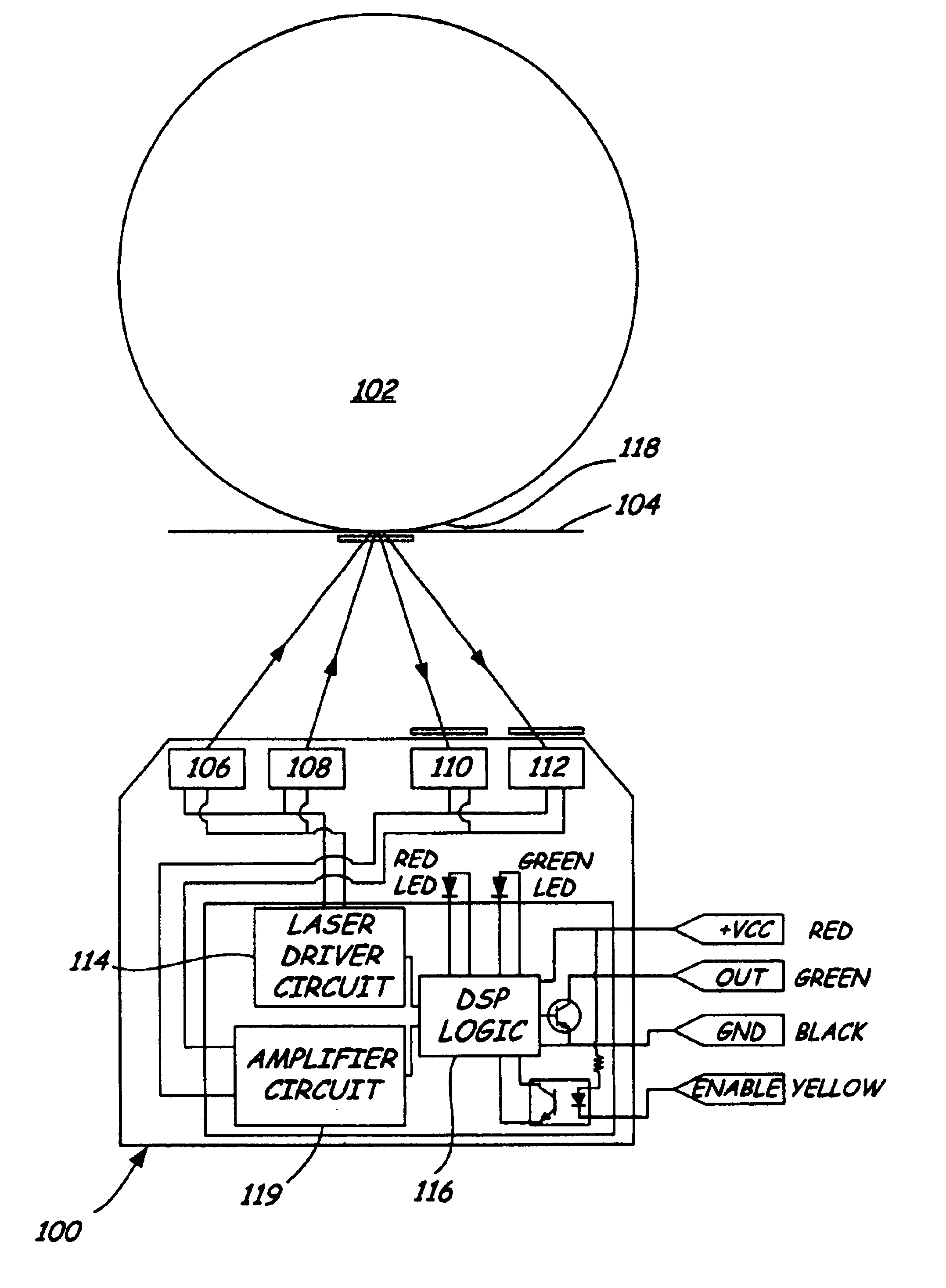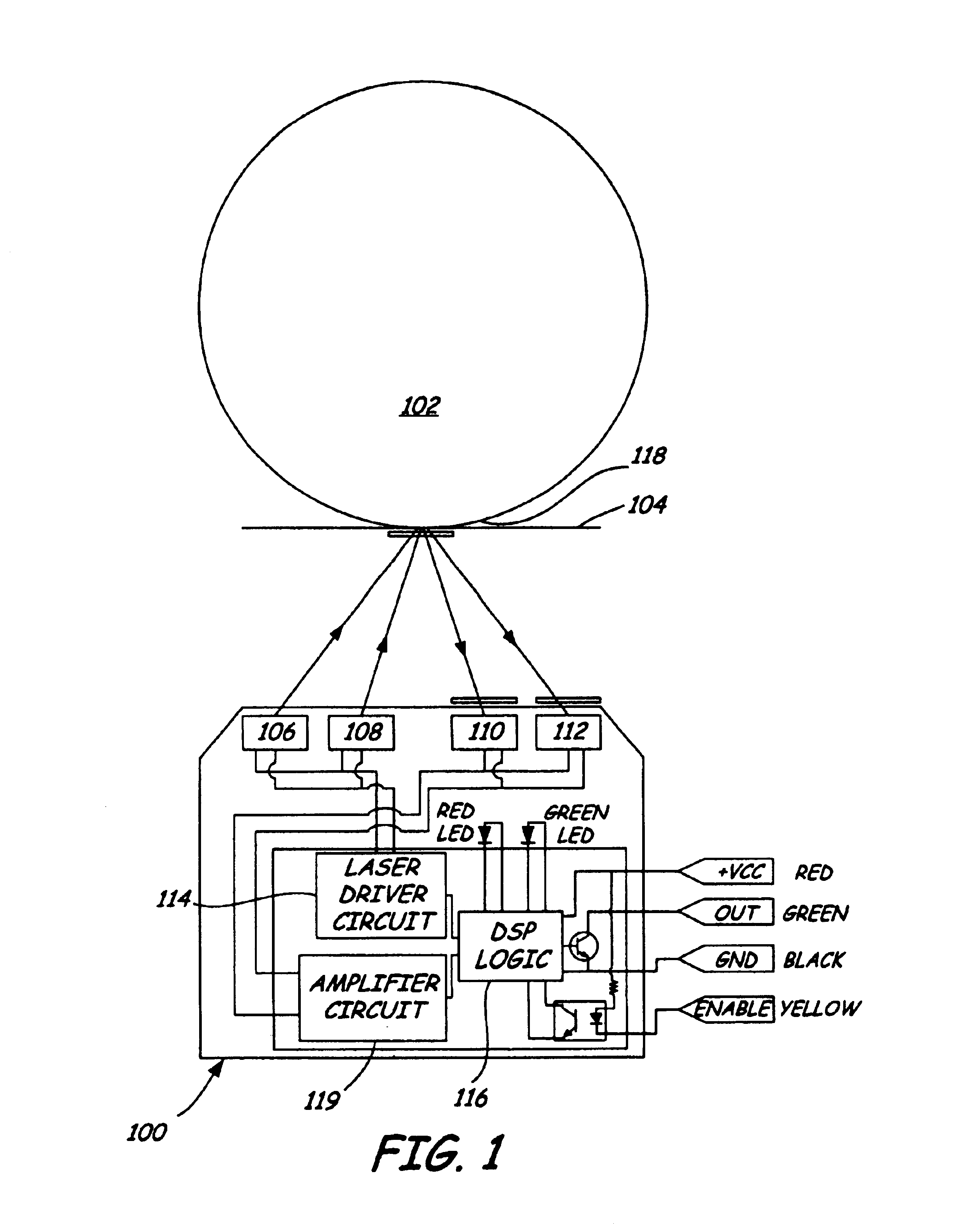Semiconductor wafer carrier mapping sensor
- Summary
- Abstract
- Description
- Claims
- Application Information
AI Technical Summary
Benefits of technology
Problems solved by technology
Method used
Image
Examples
Embodiment Construction
[0012]Embodiments of the present invention are directed to increasing the effective dynamic range of laser-based wafer carrier mapping sensors. Various features and combinations thereof have been explored that synergistically provide significantly advanced wafer detection. These features will be set forth below individually, but it is expressly contemplated that embodiments of the invention are not limited to the individual features but also include the vast array of combinations thereof.
[0013]FIG. 1 is a diagrammatic view of a wafer carrier mapping system in accordance with embodiments of the present invention. FIG. 2 shows a sensor geometry that is more optimum for on-axis applications. Sensor 100 is arranged to detect wafers such as wafer 102 in carrier 104. One example of carrier 104 is a Front Opening Unified Pod (FOUP) Two laser sources, preferably laser diodes, 106 and 108 shine respectively into detectors 110 and 112, when reflected from wafer edge 118. Each of sources 106, ...
PUM
 Login to View More
Login to View More Abstract
Description
Claims
Application Information
 Login to View More
Login to View More - R&D
- Intellectual Property
- Life Sciences
- Materials
- Tech Scout
- Unparalleled Data Quality
- Higher Quality Content
- 60% Fewer Hallucinations
Browse by: Latest US Patents, China's latest patents, Technical Efficacy Thesaurus, Application Domain, Technology Topic, Popular Technical Reports.
© 2025 PatSnap. All rights reserved.Legal|Privacy policy|Modern Slavery Act Transparency Statement|Sitemap|About US| Contact US: help@patsnap.com



